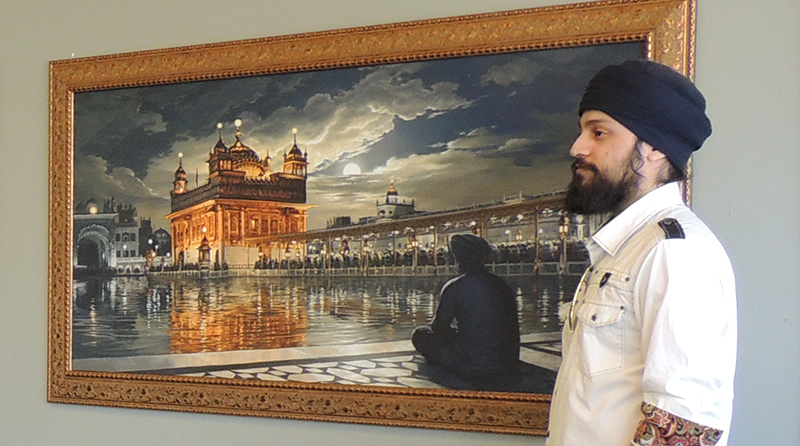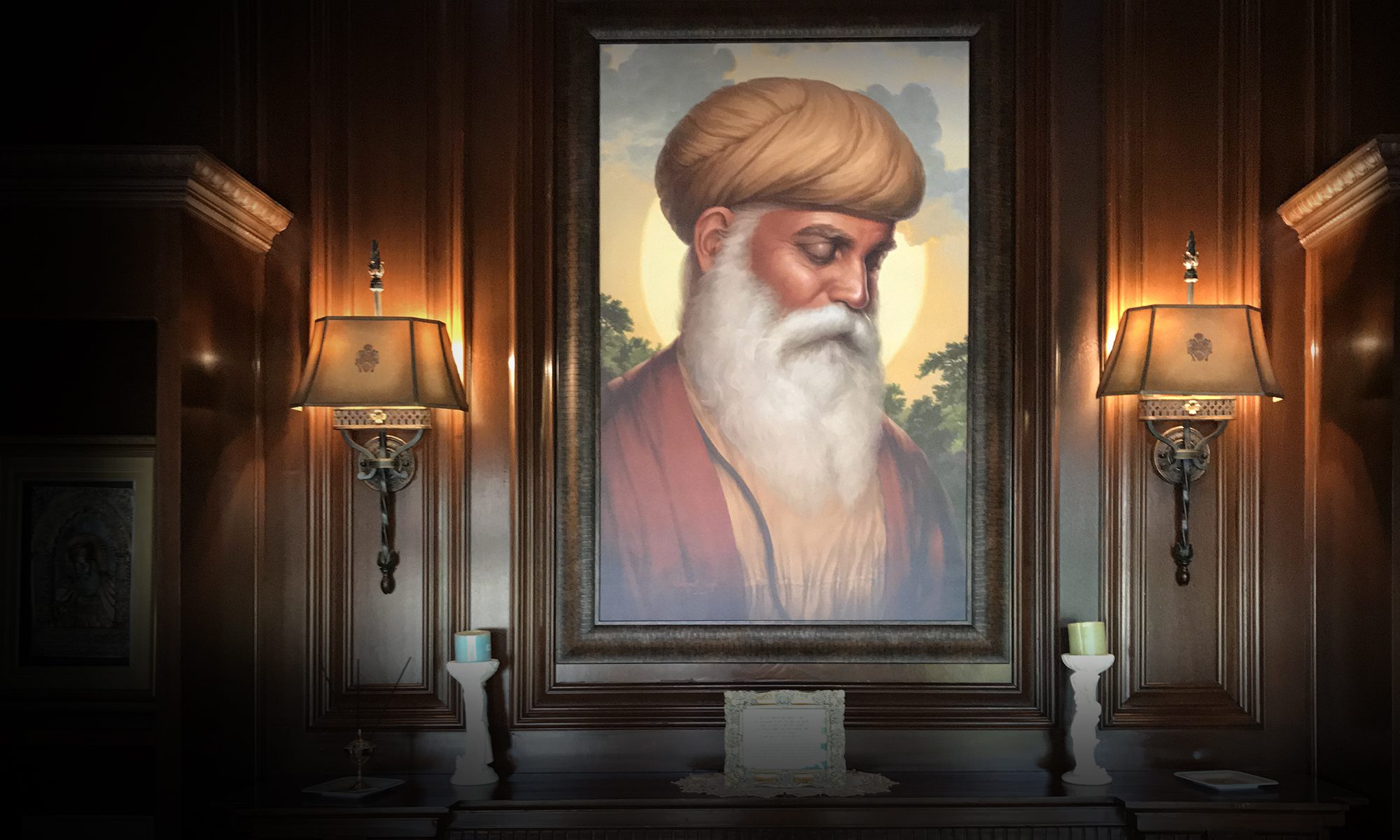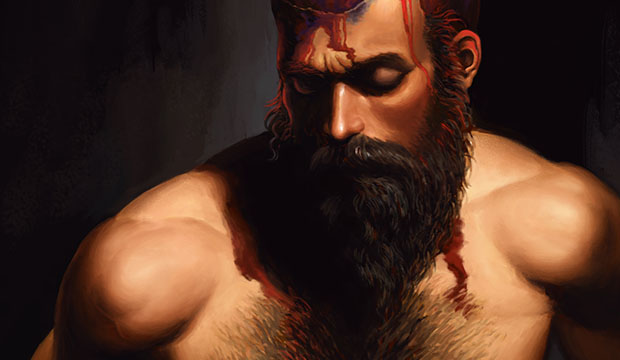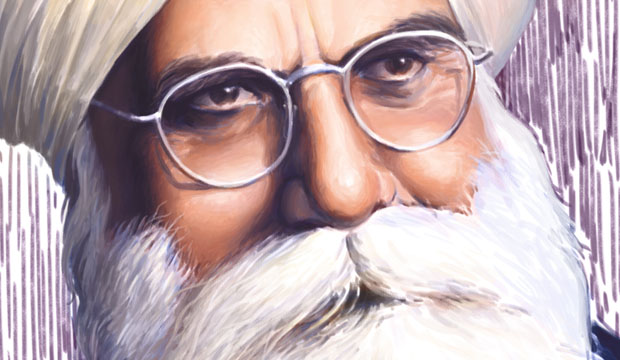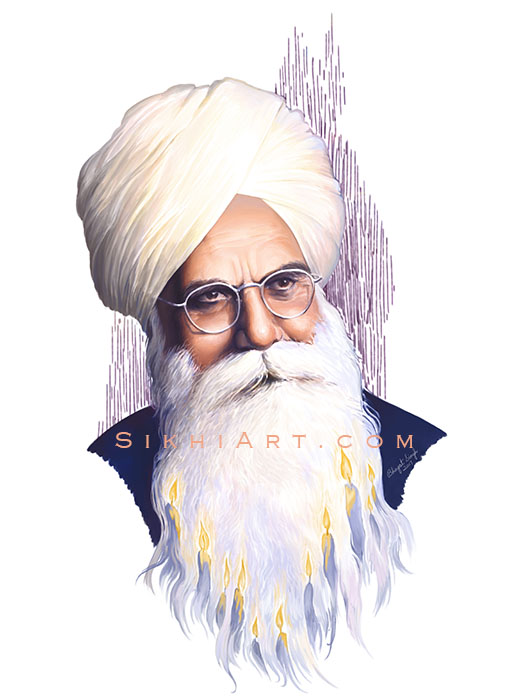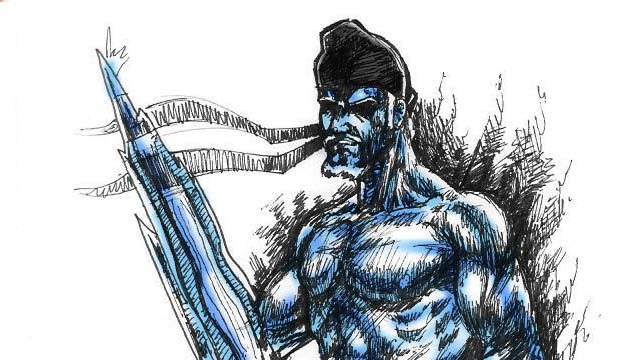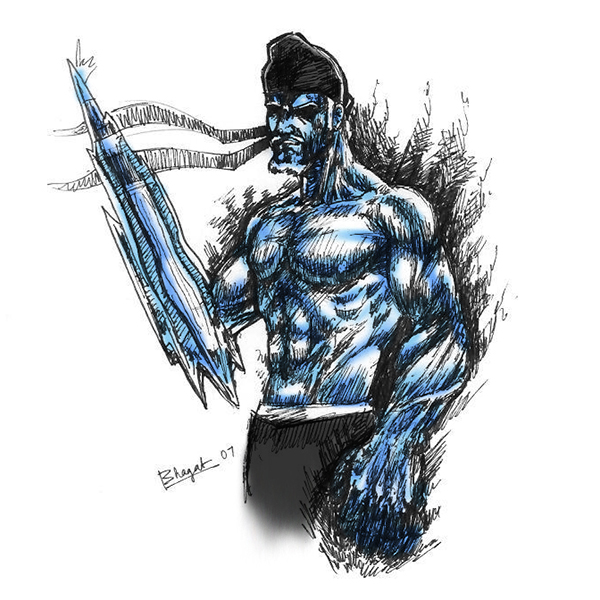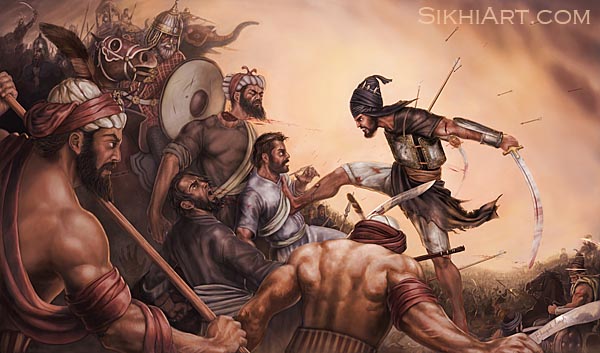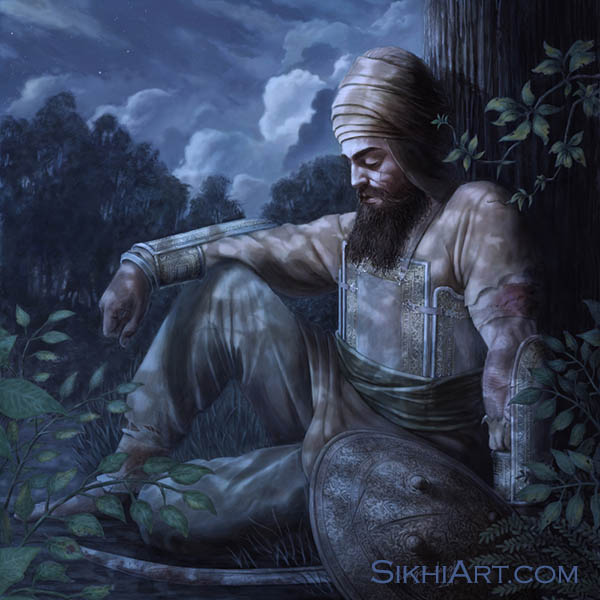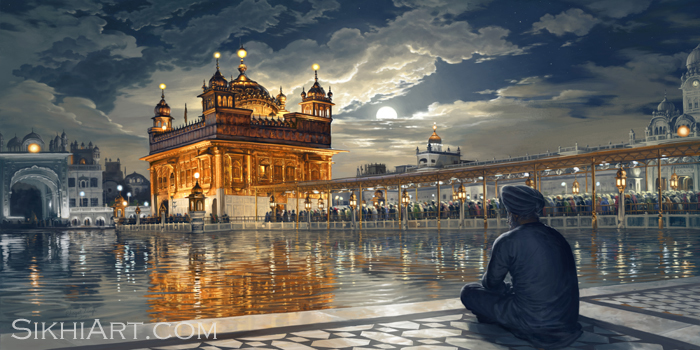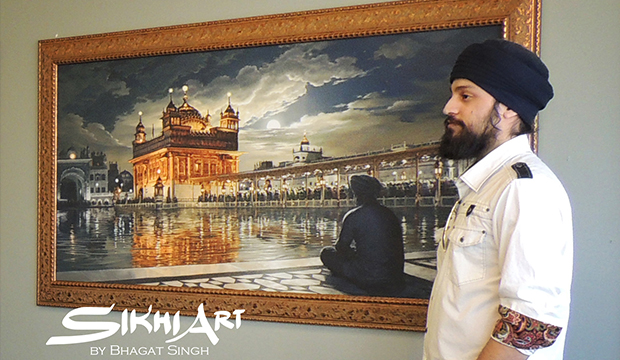“I am blind, you are my walking stick, Hari; your name is Supporter of Saints. I am poor and meek, your name is my support.”
– Sant Nam Dev ji (Guru Granth Sahib, 727)
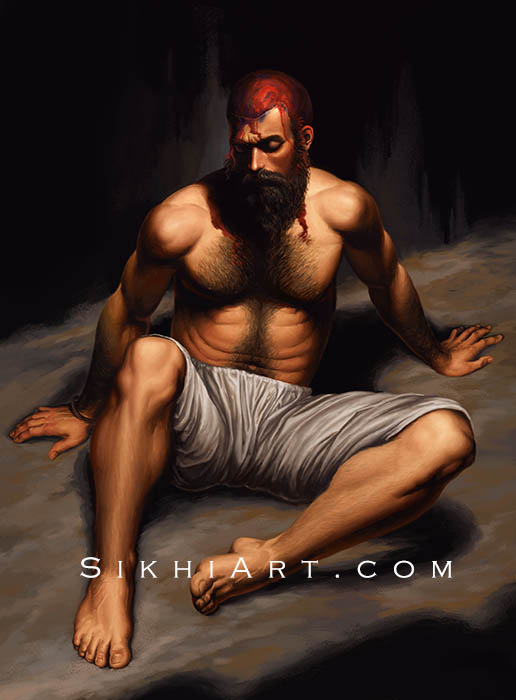
The traditional sikh art of Punjab, has always depicted Bhai Taru Singh ji having his scalp removed but it has always missed the key aspect of this story – Bhai Sahib’s internal state. Bhagat’s painting zooms in specifically on Bhai Sahib’s inner state to highlight the importance of meditation. Buy prints of Bhai Taru Singh ji if you are looking for daily inspiration to meditate.
Artist’s Notes
My painting of Bhai Taru Singh ji shows him meditating after his scalp was removed by the Mughal executioner. Admist the darkness, Bhai Sahib reclines back as a beacon of light and shows us that the path to enlightenment is to uphold Dharma.
Who was Bhai Taru Singh ji?
In his early 20s, Bhai Taru Singh ji chose to have his scalp removed rather than give up his religious traditions. He was born 12 years after the passing of Guru Gobind Singh ji and was initiated in to the tradition of the Ten Gurus, through Bhai Mani Singh ji.
In 1700s, Sikhs were being persecuted by Zakariya Khan, who ruled Punjab under the Mughal Empire. Bhai Taru Singh ji and his family would support and provide food for Sikh rebels who wished to take him down.
During this rebellion, Bhai Taru Singh ji was arrested by Zakriya Khan’s police and was tortured. The executioner used a chisel to remove his scalp, however Bhai Taru Singh ji remained absorbed in meditation.
Bhai Taru Singh ji lived after his torture, and continued to meditate and sing the praises of the Lord. He left his body immediately after the death of Zakariya Khan.
Painting Taru Singh ji
I worked on Baba Ajit Singh ji’s painting when I was his age when he sacrificed himself in the Battle of Chamkaur. Then I did Bhai Taru Singh ji’s portrait when I was his age, when he sacrificed himself for the Sikh panth.
It gives me new insights into the mindset of our warrior saints and into my own mind, to paint them at that same point in my life when they made their sacrifices.
I think about what they did at my age and what I am doing. I think about where they were headed at my age and where I am heading. In this way I align my moral compass to the Truth North and follow it.
A great man once said that we don’t get to choose whether we sacrifice or not, we only get to pick what we sacrifice. Sikh Saints followed in the footsteps of the Ten Gurus and sacrificed themselves to uphold Dharma.
So to see our warrior saints side with their Duty, over their own lives, is very inspiring, and fills me up with a fearless spirit.
Fine Art Prints for Sale
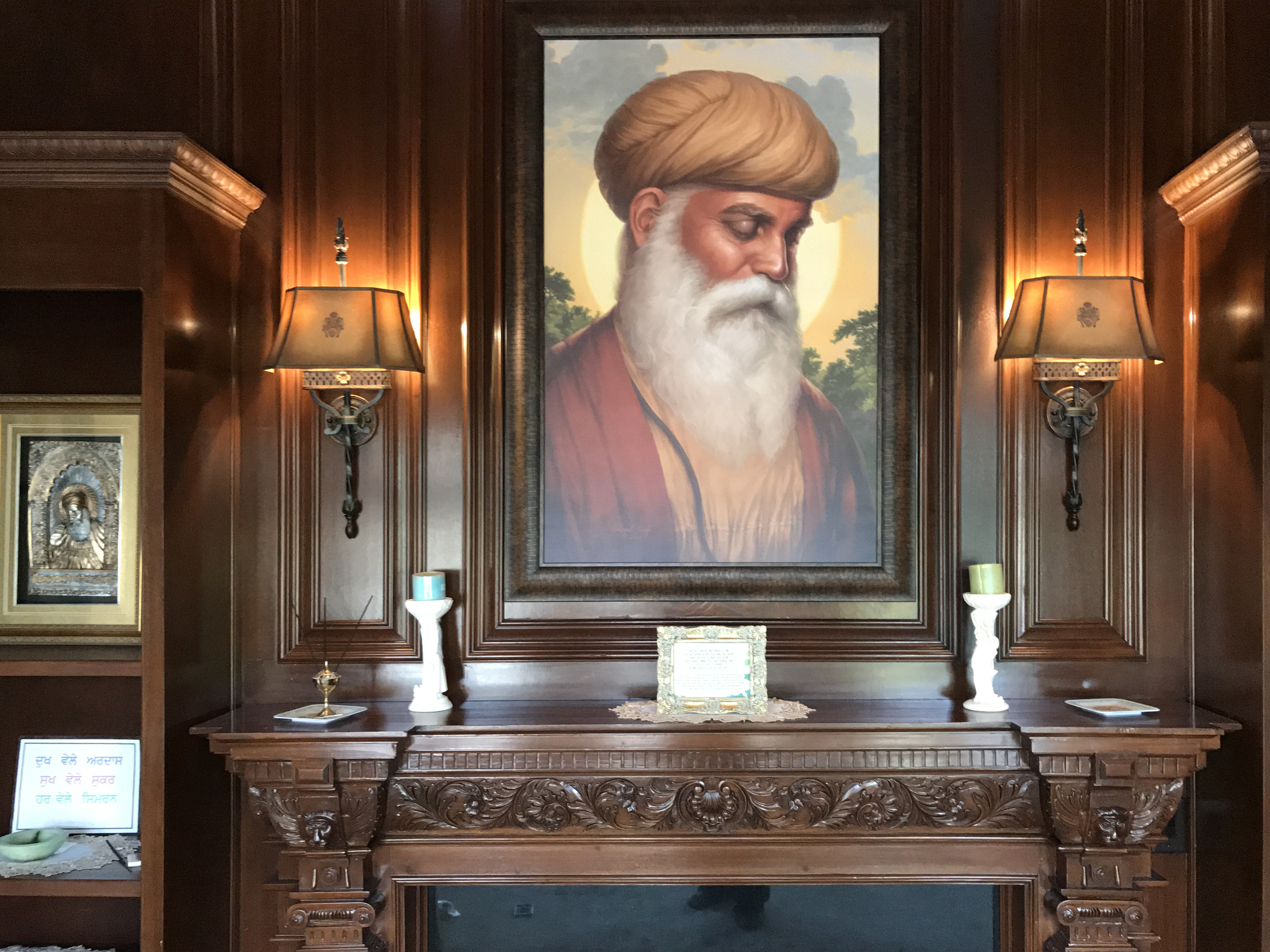
Support Sikhi Art
